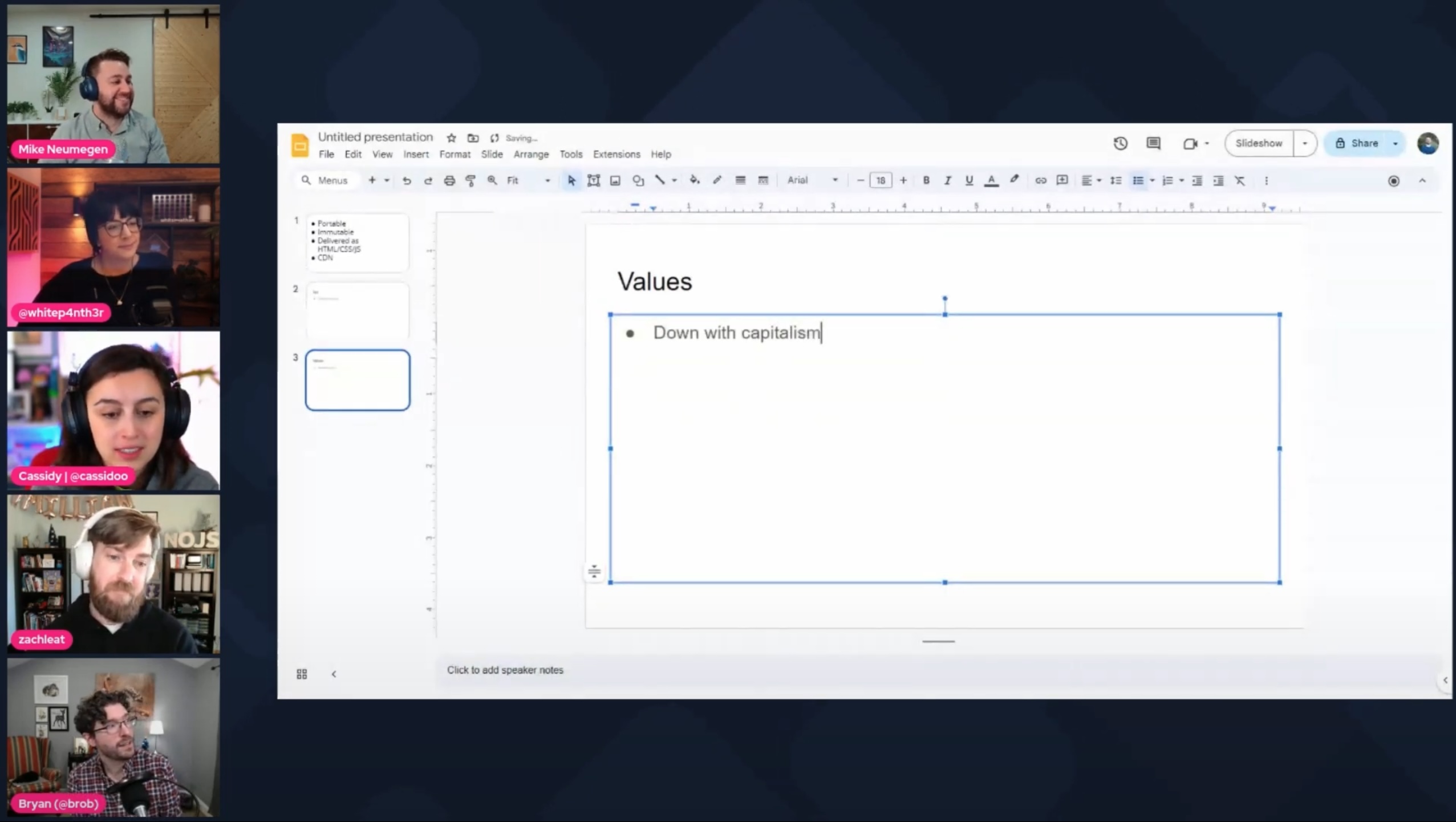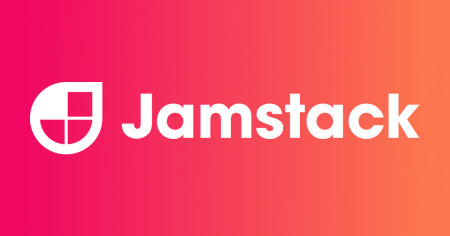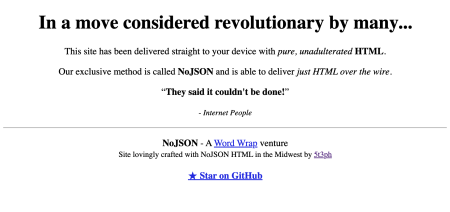Down with capitalism. - Mike Neumegen
This week I took part in a live panel discussion about what’s next for Jamstack. Hosted by Mike Neumegen and joined by Cassidy Williams, Bryan Robinson, and Zach Leatherman, we discussed what Jamstack means for web development today, its opportunities and challenges, and what that means for the community. Honestly, the conversation was invigorating for me. At last, I feel like we’re getting something back that I truly forgot we lost.
Jamstack in 2022
In 2022 I wrote What is Jamstack?, mainly as a way to refocus a very broad landscape influenced by Big Tech™️ shifting and changing the definition of the technology to suit its capitalistic needs. If you’re unfamiliar with the term, I would urge you to read that post before continuing with this one for some historical context.
The TL;DR of the 2022 post is this.
Jamstack projects have the following characteristics:
Ready-to-serve assets
Any interactivity provided without a managed server
Any interactivity provided by some combination of JavaScript and decoupled services via APIs
Full disclaimer: I was an employee of Netlify at the time. And what’s interesting is that whilst my definition aligns mostly with the conclusions of this week’s panel discussion — the introduction of the phrase “decoupled services” was highly influenced by Netlify’s evolving business model as it started to pivot its marketing efforts towards larger enterprise businesses with more money to spend. I feel like I should apologise for this blatant insertion of business jargon, but I guess I was just doing my job. Let’s fast forward to 2023.
Jamstack as we knew it died in July 2023
Netlify published a new definition of the Jamstack in 2023, introducing yet more Big Business™️ words to describe it: “flexibility, scalability, performance, and maintainability”; “Composable architecture”. Whilst Jamstack started out as a developer community centred on building pre-rendered and portable sites, it was now a marketing term pointed directly at CTOs and technical buyers re-positioned to sell Netlify services.
This message was broadcast loud and clear when “Netlify officially killed The Jamstack Community Discord”, as described by Brian Rinaldi in Is Jamstack officially finished? Not many of you will know this, but as an employee of Netlify at the time, I posted that announcement in the Jamstack Discord; after all, I was still just doing my job.
In the panel, Cassidy summed all of this up perfectly:
If I might just shout at capitalism. I think we pulled in a whole lot of things [into the Jamstack definition] saying, “Yes that counts, yes that counts,” for the shareholders, because if it counts then that means it can be hosted on this thing.
Jamstack is actually, like, really really alive
Historically when I’ve taken part in live-streamed panels, attendance and engagement with the speakers is usually low. Surprisingly, or maybe not-so, this week’s live panel was buzzing with discussion, activity and engagement. There’s a huge group of people who believe in Jamstack and want to be part of it — again.
On a personal level, the whole experience made me realise that for the last year I’ve been lacking something deeply: a technical community home on the internet where people like to build websites like I do; a group of people who share my excitement for building portable, static websites; somewhere I don’t feel like such a nerdy outsider because I’m not religiously promoting the latest experimental breaking Next.js change or encouraging everyone to server-side render their whole entire portfolio of purely content-based landing pages for their new AI startups.
In a 2023 post titled The Tension and Future of Jamstack, Zach Leatherman lays out a bunch of evidence that “Netlify has moved on from shepherding the Jamstack […] — which is fine! (and maybe preferable?).” And I agree. Whilst it may be a little trickier to fund Jamstack community endeavours without the support of a Silicon Valley tech startup, removing the capitalistic element from Jamstack is ultimately what needs to happen in order to preserve its integrity and secure its future.
Down with capitalism. - Mike Neumegen

Watch the full panel discussion
Until we find a new home on the internet for the Jamstack community to come together, we’re planning some more live events, and Mike has been building up a library of excellent discussions with prominent community members over on thefutureofjamstack.org.
I’d like to extend a huge, huge thanks to Mike for organising the first “What’s next for Jamstack” panel and for giving us a platform to revive the Jamstack values, principals and community. I’m excited for what’s to come.
Click the video above to play

Salma Alam-Naylor
I'm a live streamer, software engineer, and developer educator. I help developers build cool stuff with blog posts, videos, live coding and open source projects.


